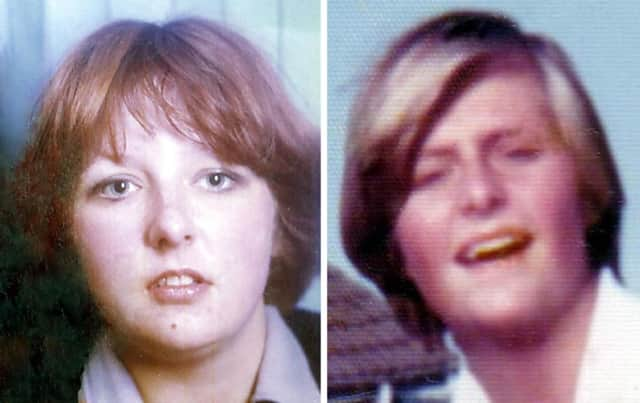World’s End trial: Girls were ‘strangled’


Dr Robert Nagle, a former police pathologist, was giving evidence at the trial of Angus Sinclair, who is accused of murdering 17-year-olds Christine Eadie and Helen Scott in 1977.
The bodies of the girls were found at separate locations in East Lothian the night after they were seen leaving the World’s End pub in Edinburgh’s Royal Mile.
Advertisement
Hide AdAdvertisement
Hide AdBoth girls had injuries consistent with throttling and of ligatures having been placed around their necks, the court heard.
Under questioning from Lord Advocate Frank Mulholland, prosecuting, at the High Court in Livingston, Dr Nagle said both girls had a series of injuries which could only have been administered by an assailant.
Now aged 90, former forensic pathologist and police surgeon Dr Nagle had carried out a post-mortem examination on Ms Eadie, and had assisted his colleague, Professor Mason, in the post-mortem examination of Ms Scott, in October 1977.
The court heard how the cause of death in both girls had been ascertained as asphyxiation by strangulation.
Referring to a number of “pinpoint haemorrhages” on Ms Eadie’s head, Dr Nagle said they were a “classic” indication in cases of asphyxiation by strangulation.
Dr Nagle said Ms Eadie’s body also had a number of abrasions or scratches likely to have been casused by a person’s fingernails.
During discussion of abrasions to the neck and a ligature track on Ms Eadie’s neck, Mr Mulholland asked: “The injuries you have been describing to members of the jury, are they in-life injuries?”
Dr Nagle replied: “They were caused during life.”
Advertisement
Hide AdAdvertisement
Hide AdDr Nagle, who retired in 1984, said bruising to Ms Eadie’s wrists indicated a ligature had been applied shortly before her death.
The court also heard that Ms Eadie had bruises a half inch in diameter over both her upper thighs.
Asked by Mr Mulholland what could have caused the bruises, Mr Nagle replied: “Pressure from a thumb or finger.”
Mr Nagle said the pressure was consistent with someone trying to push the girl’s legs apart.
Asked later about bruising to the back of Ms Eadie’s throat, Dr Nagle said the injury was consistent with those found in “any throttling case”.
The court was shown a black and white photograph of Ms Scott taken before a post-mortem examination.
Describing an injury to the left side of her face, Mr Mulholland asked: “Could this have been caused by the sole of a shoe stamping on the left side of her face.”
“Yes,” Dr Nagle replied.
Bruising to the right side of her neck was consistent with throttling, he said.
Advertisement
Hide AdAdvertisement
Hide AdLater, the court heard from Anthony Busuttil, 68, a former forensic pathologist and police surgeon and an emeritus professor of forensic medicine at Edinburgh University.
Professor Busuttil, who had reviewed the post-mortem and toxicology reports, said it was “very likely” the two murders were committed by the same person or people.
He said the discovery of the girls in similar circumstances and the nature of their injuries pointed to that conclusion.
“It looks like the two murders were perpetrated in a similar way and very likely by the same person or persons,” he told the court.
Professor Busuttil also said a semi-circular injury on Ms Eadie’s left arm was likely to have been a human bite mark.
However, defence QC Ian Duguid said that finding contradicted the view of two expert ondontologists, who could not be sure the mark was the result of a human bite.
The professor also agreed with Mr Duguid that the bruises on Ms Eadie’s thighs could have been caused by something else; walking into a table in the pub, for example.
Sinclair, 69, denies assaulting, raping and murdering the girls.
Advertisement
Hide AdAdvertisement
Hide AdHe has submitted three special defences of incrimination – blaming his brother-in-law Gordon Hamilton, now dead; alibi – saying he was fishing at the time; and consent to sexual intercourse.
The trial, before Lord Matthews, continues.
SEE ALSO